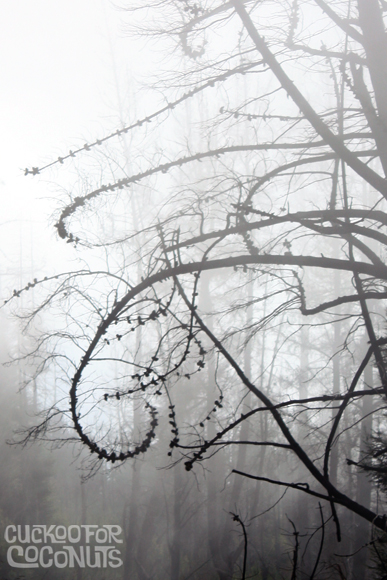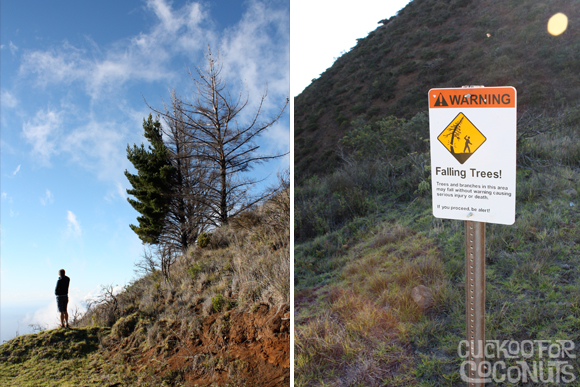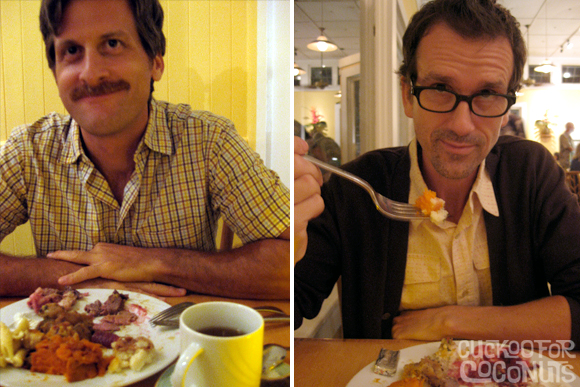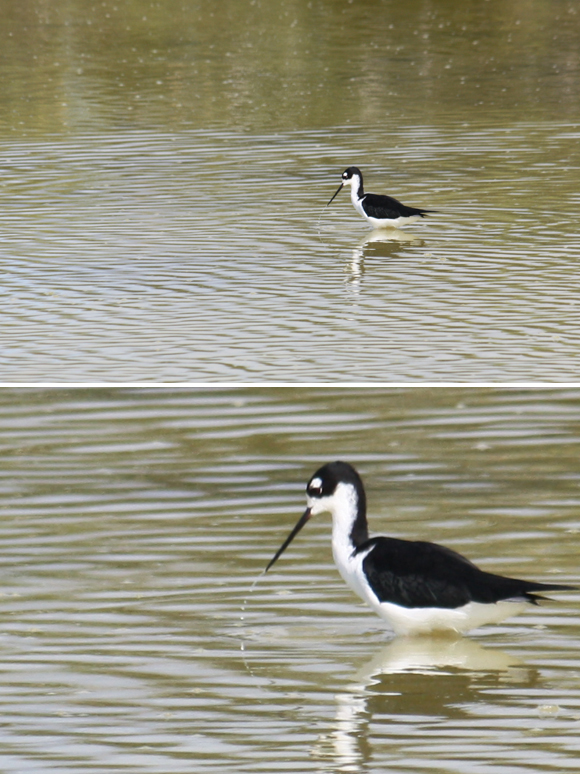 |
| Just above Ali'i Kula Lavender with the central valley below and West Maui behind us. |
Thanksgiving was a bit different around here this year. No brining of a turkey. No wrapping one in bacon. No drying bread for dressing or mashing potatoes. Nope. This year we took the day off. Off from commissioned work, yard work, house work, cooking and dishes.
We woke up, lounged about and finally headed up to
Polipoli Spring Recreation Area for a short hike about 5300 - 6000 feet above sea level. It's just above the
Ali'i Kula Lavender Farm... about a 30 minute drive on a on lane pot hole filled and sometimes muddy road. It's one of our favorite places on the island, but we have not been back since 2006 after it was subject to a massive fire in
January 2007, which consumed over 4500 acres of this beautiful redwood and eucalyptus forest. It's slowly coming back and we saw tons of new 4-5 trees sprouting up by the thousands.
After a short hike where we got to see some amazing views of the West Maui Mountains and of the Big Island, we headed down to
Hali'imaile General Store where we had dinner reservations.
They had a Thanksgiving buffet for $36 per person that we just couldn't resist. The menu consisted of:
Mixed baby greens with wasabi peas, caramelized pineapple and goat cheese wontons to start. Roast turkey and gravy, prime rib with horseradish sauce, fresh corn chip and salsa crusted monchong (fish), savory chicken and pine nut stuffing, bread pudding with chestnuts and dried cherries, mashed potatoes, sweet potatoes, roasted vegetable medley, truffle mac and cheese, cranberry sauce, biscuits and pumpkin pie.
After we piled our plates and consumed the massive amounts of food that sat before us, we could not even think about the pie, so they boxed up 2 slices with fresh whipped cream for us to take home. We can't tell you how great it was to not have to do all that cooking and most importantly... the cleaning up. Coming home to a spotless kitchen on a full stomach was a joy.
It's really important to take the time and enjoy your surroundings no matter where you live. We all know to well how easy it is to get caught up in day to day chores and projects. We hope you had as great a day as we did. Here are some pics from a really gorgeous and completely relaxing, carefree Maui day.
ps. Many mahalo's to the staff at Hali'imaille for turning it out for those of us that didn't want to bother.
 |
Top: Rainbow over Kula.
Bottom: View of Ma'alaea Bay, West Maui and the island of Lana'i in the distance... not to mention those enormously heavy clouds. |
 |
Top: Charred remains of a majestic pine with a few survivors in the distance and a slew of new trees making their way out of the charred forrest floor.
Bottom: A little higher up is the eucalyptus forest shrouded in fog and cool air which is scented with eucalyptus. |
 |
A magical moment as we were walking through the eucalyptus forest.
Step into the light. |
 |
| A very Tim Burton or Dr. Suess skeleton of a charred pine tree. |
 |
A detail of the above pine shows gnarled branches still clinging to a few last pinecones, that look as though they are about to grab you as you pass by.
 |
Top: Stellar views of The Big Island.
Bottom: A few more charred trees and West Maui. |
 |
Top: Me with my new phone trying to find our coordinates high above Maui's last lava flow some 500 years ago. It's that black patch of lava down along the shore.
Bottom:A cinder cone from where lava once flowed and views of Maui's central valley. All the bright green way down there are the sugar cane fields. |
 |
| Um.... John... Did you happen to see that sign back there? |
 |
| As the day draws to a close over a dormant cinder cone, we make our way back down the mountain through open fields of cattle and a painted sky. |
 |
| Plate is loaded... then it's not. I ate it all... and managed to go back for a second helping of truffle mac and cheese. |
 |
| Do we look content or what? |
|




































